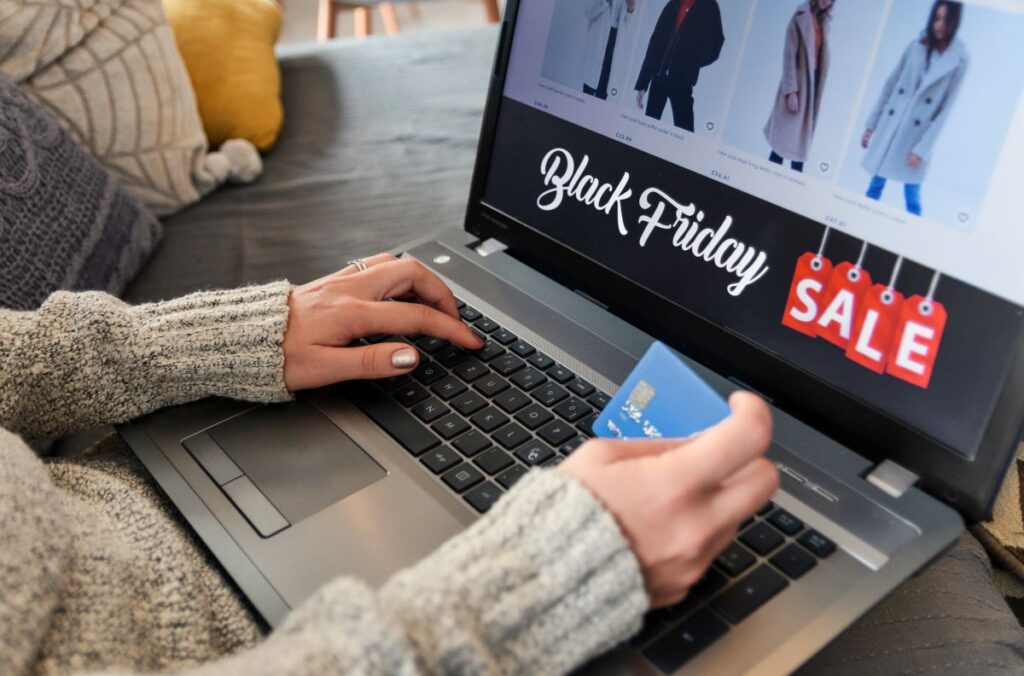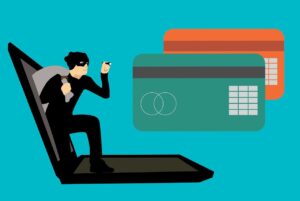Black Friday is the biggest shopping event of the year-and for ecommerce brands, it’s not just an opportunity, but a pivotal moment that can shape your entire Q4 revenue.
With competition increasing each year and shoppers expecting faster experiences, better deals, and seamless service, preparing your ecommerce store early is the key to outperforming competitors and maximizing sales.
This guide breaks down a complete Black Friday preparation framework covering site optimization, marketing funnels, pricing, inventory planning, and execution.
You’ll find actionable steps to make this your strongest Black Friday yet.
1. Analyze Last Year’s Performance to Build a Strong Strategy
Before planning new tactics, you need to understand what worked-and what didn’t. Reviewing last year’s data provides critical insights that guide everything from your product strategy to your ad budget.
Start by reviewing your core metrics:
- Traffic sources: Which channels delivered the most visitors?
- Conversion rates: Where are shoppers abandoning the funnel?
- Best-selling products: Which product categories carried the event?
- Peak traffic and sales times: When did shoppers convert most?
- AOV and customer acquisition cost: Did discounting affect profitability?
Also analyze any bottlenecks you experienced-slow site speed, stock shortages, delayed customer service responses, or ad campaigns that didn’t convert.
Benchmark your performance against industry trends to understand whether you’re ahead or behind the market. With this foundation, you can set realistic goals and build a stronger promotion plan.
2. Optimize Your Ecommerce Website for Speed, UX, and Conversions

Your website becomes the center of your Black Friday strategy. Every additional second of load time increases abandonment rates dramatically, and a poor user experience can cost thousands in lost revenue.
Improve Site Speed & Technical Performance
Shoppers bounce quickly when pages lag-especially on mobile. To prepare for traffic surges:
- Compress and optimize images
- Remove unnecessary scripts and apps
- Enable lazy loading for media-heavy pages
- Upgrade hosting or add a CDN
- Minimize redirects and large animations
A fast-loading site immediately improves conversions and keeps customers browsing longer.
Streamline the Shopping Experience
Black Friday shoppers scan quickly-they want to find what they need without friction. Focus on:
- Clear, intuitive navigation
- Simple product categorization
- A mobile-first layout
- Clear CTAs guiding users to deals
- A frictionless checkout process (guest checkout is essential)
A smoother experience increases conversions dramatically during peak shopping periods.
Strengthen On-Site Trust Signals
Shoppers want reassurance that your store is secure and reliable. Add visible trust elements across your store:
- SSL and secure checkout icons
- Displayed reviews, ratings, and testimonials
- Clear return policies
- Transparent shipping timelines
- Trust badges for payment providers
These signals reduce anxiety and boost purchase confidence.
3. Prepare High-Converting Product Pages
Black Friday traffic is high-but traffic only matters when your product pages actually convert.
- Refresh your descriptions to ensure they’re compelling, helpful, and SEO-friendly
- Add high-quality images and consider including lifestyle photos to improve engagement
- Update metadata so your pages align with seasonal search trends
Add urgency elements such as:
- Limited-time labels
- “Only X left” inventory indicators
- Countdown timers
- Exclusive Black Friday bundles
Creating dedicated Black Friday landing pages for bestsellers, collections, or categories helps shoppers find deals quickly and boosts your search visibility.
4. Inventory Planning & Supply Chain Readiness
Selling out too early can hurt revenue-and overstocking can impact profit long-term. Strategic inventory planning helps prevent both.
Analyze last year’s data to identify products likely to sell quickly. Coordinate with suppliers early to avoid delays or shortages. Ensure your fulfillment partners are prepared for heavy volume and confirm their shipping timelines.
Create bundles or gift sets to increase average order value, and consider limited-edition or exclusive products that appeal to Black Friday urgency.
Always build a contingency plan for unexpected stockouts-such as offering pre-orders, back-in-stock alerts, or alternative product recommendations.
5. Create a Competitive Pricing & Discount Strategy
Discount strategy is one of the biggest factors shoppers consider, and competition is tougher every year. Your pricing approach should be strategic-not random.
Identify your hero products and decide which items will anchor your promotion. Use a tiered discount structure, such as:
- X% off sitewide
- Bigger discounts on top-selling categories
- Exclusive offers for VIP customers
- Add-on gifts for high-value orders
Research competitor pricing so your deals remain competitive without harming your margins. Plan upsells and cross-sells that pair well with your core products.
Build a promotional timeline with phases:
- Early-access offers for VIPs
- Black Friday weekend deals
- Cyber Monday-specific discounts
This maximizes revenue across several days rather than a single event.
6. Build Your Black Friday Marketing Funnel

Your marketing strategy should begin weeks before Black Friday. Consumers plan in advance, and brands that warm up their audience early see significantly better conversion rates.
Email Marketing Prep
Email remains the highest-ROI channel for Black Friday. Prepare by:
- Segmenting your audience (VIPs, repeat customers, leads, new subscribers)
- Creating automated flows like price-drop alerts and cart recovery sequences
- Planning a full campaign timeline: teaser – early access – launch – last chance
Include exclusive deals for VIP members to drive loyalty.
SMS & Push Notifications
SMS is powerful for real-time updates-perfect for “just dropped” deals or time-sensitive doorbusters. Keep messages short, urgent, and tightly targeted.
Paid Ads & Retargeting
Paid ads intensify during Q4, and costs rise sharply. Start building retargeting audiences weeks ahead using meta events, Google ads, and TikTok engagement.
Refresh your creativity to highlight deals, urgency, and seasonal messaging. Adjust budget allocation to ensure your best channels receive appropriate funding during peak traffic.
Content Marketing & SEO
Black Friday SEO should begin months in advance. Publish content such as:
- Gift guides
- Black Friday deal pages
- Product comparisons
- Listicles targeting search trends
Strengthen internal linking to seasonal pages to improve discoverability.
7. Prepare Operational Workflows & Customer Support
Operational readiness determines whether your Black Friday sales run smoothly-or become a costly disaster.
Start by confirming your fulfillment partner’s capacity. Ensure your warehouse team is staffed appropriately and review packaging standards to prevent delays.
Set up automated email sequences for order confirmations, shipping updates, and tracking notifications. Customers appreciate clarity, especially during busy seasons.
Prepare customer service scripts for common issues such as:
- Late deliveries
- Discount code problems
- Wrong size or color orders
- Refund requests
Speed matters-shoppers expect quick and helpful support during peak sales events.
8. Optimize for Mobile Shoppers
More than half of Black Friday purchases now happen on mobile devices. A mobile-friendly experience is non-negotiable.
Check that:
- Your site loads quickly on mobile
- Buttons, forms, and CTAs are easily clickable
- The checkout process is simplified and intuitive
- Payment options like Shop Pay, PayPal Express, and Apple Pay are enabled
Mobile-first design ensures you don’t lose conversions to poor usability.
9. Strengthen Cart Recovery & Retention Systems
The volume of abandoned carts during Black Friday is massive. But with recovery systems in place, you can win back a large percentage.
Create layered abandonment strategies such as:
- Exit-intent pop-ups offering extra incentives
- Multi-step abandoned cart email flows
- SMS reminders for returning customers
- Retargeting ads for warm leads
Retention is equally important. Encourage post-purchase engagement through loyalty rewards, discounts on future orders, or personalized product recommendations.
10. Run Pre-Launch Tests to Ensure Peak Performance

Before launching your Black Friday event, test every part of your ecommerce system. Check:
- Discount codes
- Mobile navigation
- Payment gateways
- Page load speeds
- Product variants and inventory sync
- Analytics, pixel tracking, and event firing
- Email and SMS automations
Perform stress tests to simulate high traffic and take backups of your site. Minor issues can snowball into major problems on launch day-testing ensures stability.
11. Launch Day Execution Plan
When Black Friday begins, you should have real-time monitoring systems ready. Assign team members to monitor:
- Website traffic
- Server performance
- Ad spend efficiency
- Cart abandonment
- Fulfillment updates
- Customer service queues
Be prepared to adjust campaigns, fix issues quickly, and push time-sensitive deals through SMS and email as inventory changes.
12. Post-Black-Friday Strategy & Cyber Monday Prep
Once Black Friday ends, the weekend is far from over. Cyber Monday drives strong digital sales, and many brands extend promotions across the week.
Re-engage recent customers with emails highlighting Cyber Monday exclusives or free shipping incentives. Encourage shoppers to join loyalty programs for additional rewards.
After the event, evaluate your performance:
- Sales by product
- ROAS (Return on Ad Spend) and CAC (Customer Acquisition Cost)
- Conversion rates
- Email and SMS performance
- Operational issues
- Customer feedback
These insights help you refine your strategy for upcoming campaigns and next year’s events.
Conclusion
Black Friday is more than a sales event-it’s a powerful opportunity to acquire new customers, boost revenue, and strengthen brand loyalty. With the right preparation, from website optimization to strategic marketing and operational planning, you can deliver a seamless shopping experience that sets your ecommerce store apart from competitors.
Approach Black Friday with a strategic mindset, treat preparation as a year-round process, and use each event as a foundation for long-term growth.
When executed well, your Black Friday success becomes a stepping stone for sustainable and scalable ecommerce expansion.









